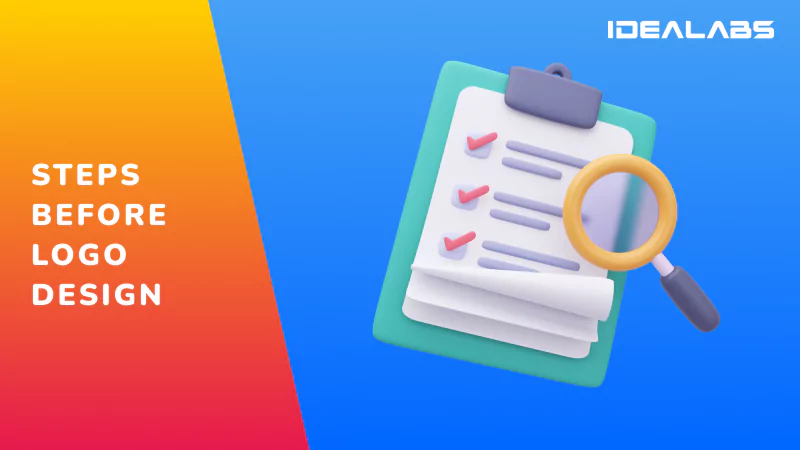When starting a business or rebranding an existing one, a professional logo is a crucial element for creating a strong brand identity. Before reaching out to a logo designer, there are several steps you should take to ensure you get the best results. This article will guide you through the essential preparations to make before hiring a logo designer.
1. Understand Your Brand Identity
Define Your Mission and Vision
Your brand's mission and vision statements are fundamental. They outline your business’s purpose and goals, guiding your logo designer to create a design that aligns with your brand’s core values. Take time to clearly articulate these statements.
Identify Your Target Audience
Understanding your target audience is crucial. Consider their demographics, interests, and preferences. Your logo should resonate with the people you aim to attract, making it important to communicate these details to your designer.
Analyze Your Brand’s Personality
Is your brand fun and playful, or serious and professional? Identifying the personality of your brand helps in crafting a logo that reflects the right tone and style. Create a list of adjectives that describe your brand to give your designer a clear direction.
2. Conduct Market Research
Study Competitors
Analyze the logos of your competitors. This helps you understand industry standards and identify ways to differentiate your brand. Take note of what works and what doesn’t, and think about how you can stand out while staying relevant to your industry.
Gather Inspiration
Look for logo designs that you find appealing. Websites like Pinterest, Behance, and Dribbble are excellent sources of inspiration. Collect examples and note what you like about each one. This will help your designer understand your preferences.
3. Define Your Logo Requirements
Choose the Right Style
Logos come in various styles: wordmarks, icons, combination marks, etc. Decide which type suits your brand best. For example, a tech startup might prefer a modern, minimalist logo, while a children’s brand might opt for something more colorful and playful.
Specify Colors and Fonts
Colors and fonts convey specific messages and emotions. Decide on a color palette and fonts that reflect your brand’s identity. Tools like Adobe Color can help you create harmonious color schemes. Remember to consider color psychology and how different hues can affect perception.
Consider Scalability and Versatility
Your logo should look good in various sizes and on different mediums, from business cards to billboards. Ensure your designer creates a logo that is versatile and scalable, maintaining its integrity and readability in all formats.
4. Set a Budget
Determine how much you’re willing to spend on a logo. Prices can vary significantly based on the designer’s experience, expertise, and the complexity of your requirements. Having a clear budget helps you find a designer within your price range without compromising on quality.
5. Prepare a Design Brief
A design brief is a document that outlines all your logo requirements. A comprehensive brief helps your designer understand your expectations and reduces the chances of miscommunication. Include the following in your brief:
- Company Overview: Describe your business, its mission, and vision.
- Target Audience: Define who your customers are.
- Brand Personality: List adjectives that describe your brand.
- Logo Style: Specify the type of logo you prefer.
- Colors and Fonts: Mention any specific preferences or requirements.
- Inspiration: Include examples of logos you like and explain why.
- Usage Scenarios: Detail where and how the logo will be used (e.g., website, print materials, merchandise).
6. Research and Select a Designer
Check Portfolios
Review the portfolios of potential designers to assess their style and expertise. Look for consistency in quality and whether their previous work aligns with your vision.
Read Reviews and Testimonials
Client reviews and testimonials provide insights into the designer’s professionalism and reliability. Platforms like Google Reviews, Upwork, and LinkedIn can be valuable resources for this.
Conduct Interviews
Interview a few designers to gauge their understanding of your project, communication skills, and willingness to collaborate. Ask about their design process, timeline, and how they handle revisions.
7. Plan for Collaboration
Set Clear Expectations
Establish clear communication channels and set expectations regarding timelines, feedback, and revisions. This ensures a smooth working relationship and a better final product.
Provide Constructive Feedback
Be prepared to give detailed, constructive feedback throughout the design process. Clear, specific feedback helps the designer make necessary adjustments and achieve the desired outcome.
Conclusion
Hiring a logo designer is a significant step in establishing your brand’s identity. By understanding your brand, conducting market research, defining your requirements, setting a budget, preparing a design brief, researching designers, and planning for collaboration, you can ensure a smooth and successful logo design process. Taking these steps before reaching out to a designer will help you achieve a logo that truly represents your brand and resonates with your target audience.

